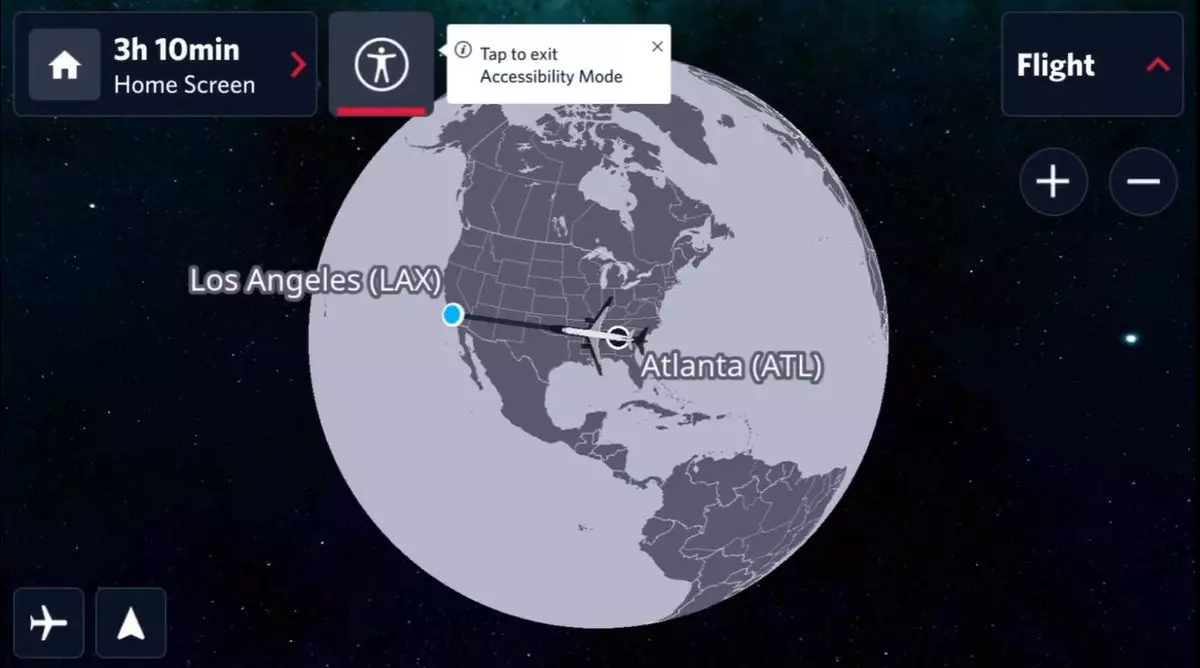In a significant move towards greater inclusivity in air travel, Delta Air Lines has launched an innovative accessible flight map designed specifically for travelers with visual impairments. This initiative reflects the airline’s commitment to improving the travel experience for all passengers, irrespective of their abilities. Currently, this new feature is operational on 171 aircraft, with plans to roll it out across over 600 planes before the upcoming holiday season. This ambitious timeline underscores Delta’s determination to enhance accessibility in a sector that historically trails in inclusive innovations.
The accessible flight map serves to provide crucial information to those who may struggle with traditional visual displays. Delta’s managing director of customer experience, Ekrem Dimbiloglu, highlighted that a significant proportion of passengers—almost half—utilize the flight map feature on their in-flight screens, with a notable 20% relying solely on this tool throughout their journey. This statistic illustrates the importance of ensuring that all users can engage meaningfully with in-flight information and enhances the overall travel experience.
The accessible map simplifies the flight information by presenting it with larger fonts, high-contrast colors, and streamlined details compared to the conventional maps. This design choice is not merely aesthetic; rather, it emphasizes legibility and engagement for users with varying degrees of visual ability. Additionally, Delta is planning to integrate a voice narration feature into the application, aiming for its presence next year. This prospective addition aligns with the airline’s resolve to not just meet minimum accessibility standards but to redefine them.
The development of the accessible flight map has been a collaborative effort. Delta worked closely with FlightPath3D, the product’s developer, to refine the application based on user feedback. The vetting process included interactions with a dedicated Advisory Board on Disability, which proposed essential modifications after evaluating an initial prototype. This collaborative methodology highlights the importance of direct engagement with disability advocacy groups, ensuring that the product genuinely meets the needs of its users.
Notably, the development timeline of just 13 months from conception to implementation is an impressive feat in the typically slow-moving airline industry. Such rapid progress is a commendable example of what can be achieved when airlines prioritize innovation and accessibility in their design processes.
Both Delta and FlightPath3D express aspirations for broader adoption of similar accessible technologies within the aviation industry. Dimbiloglu emphasized that the initiative extends beyond mere profitability; it is about doing what is right for all passengers. This sentiment resonates with Duncan Jackson, president of FlightPath3D, who pointed to the potential impact on the approximately 400 million users of their standard product. The hope is that the accessible map will become a standard feature across all airlines, thereby promoting equality in air travel.
Delta Air Lines’ initiative in launching an accessible flight map is a giant leap toward achieving inclusivity in aviation. By focusing on the needs of visually impaired travelers, Delta not only enhances their customer experience but sets a benchmark for other airlines to follow. The move prompts a broader industry conversation about the necessity of adopting inclusive technologies, ensuring that every passenger can travel with confidence and ease.


Leave a Reply